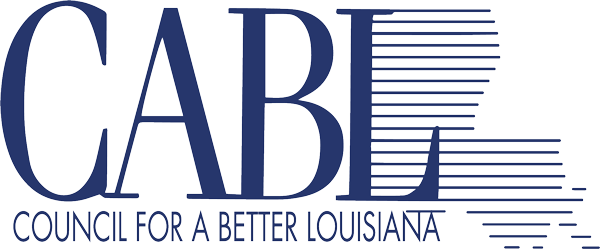
It didn’t garner a lot of attention, but a recent study of teacher pay in Louisiana that was presented to a legislative task force looking at teacher recruitment and retention sheds new light on how we compensate educators in Louisiana. Some of the findings were eye opening and should be the starting point for future discussions about raising teacher pay.
The study was undertaken on behalf of the Teacher Recruitment, Recovery, and Retention Task Force which has been working for two years to understand the issues that have contributed to teacher shortages in Louisiana and make recommendations for addressing the problem.
There are many reasons why fewer people are choosing teaching as a career, and often leaving the profession soon after they get into the classroom. But there is no question that compensation is an important part of the equation. Lawmakers and the governor have acknowledged that by proposing and passing modest teacher pay increases in three of the last four years.
But teacher pay in Louisiana is still considered low. Ranking states according to teacher pay in the southern region is an ever-moving target, but data compiled by the Southern Regional Education Board before the most recent raises places Louisiana 12th of the 16 states in the region, with an average pay of $52,472.
This new study validates some things that many may have thought intuitively about teacher pay. One is that teacher salaries are generally higher in the better-performing school systems than what you see in those that rank low. Another is that teacher vacancy rates are lower in the districts that pay teachers the most.
But digging deeper, the study reveals some structural issues that policy makers should be aware of if the state hopes to address compensation issues in a meaningful way.
For example, while Louisiana’s average teacher salaries rank low in the southern region, starting pay is actually somewhat high. At $41,747 it eclipses both the regional and national average for starting pay. Among deep south states, only Texas pays beginning teachers more money.
But high starting pay coupled with low average pay suggests a problem that the study brings out in a way we really haven’t seen before – earning potential over the course of a teaching career is extremely limited in Louisiana.
This chart of salary ranges over a 20-year teaching career tells the story. These are the school districts in Louisiana with the highest year-one starting salaries for a teacher with a bachelor’s degree.
District Starting Pay Year 7 Year 20 Year 1/Year 20 Difference
Iberville $55,006 $57,211 $63,156 $8,150
Plaquemines $54,560 $57,871 $64,020 $9,460
St. Charles $54,119 $59,372 $70,312 $16,193
St. James $51,652 $55,183 $61,740 $10,088
DeSoto $51,500 $55,000 $61,500 $10,000
What this shows for these districts, and it is also the case for the state as a whole, is that there is a relatively small degree of separation between what first-year teachers are paid and the salary of a 20-year veteran. In most cases the difference is only about $10,000 – far different than what you typically see in the private sector.
The situation is significantly worse in the school districts with the lowest starting pay, where the difference in pay between new teachers and those with the most experience is alarmingly small – usually in the range of $7,000 or less.
District Starting Pay Year 7 Year 20 Year1/Year 20 Difference
Tensas $30,256 $32,762 $37,416 $7,160
Catahoula $31,658 $34,134 $38,561 $6,903
St. Helena $31,800 $32,439 $33,756 $1,956
Winn $32,687 $35,163 $39,805 $7,118
Franklin $33,838 $36,175 $40,608 $6,770
These numbers are concerning on many fronts. For one, they show that for some school districts, veteran educators are paid less than the state’s average starting pay for first-year teachers. They also show that there is a wide gap between what teachers make in various districts across the state. This is largely because some parishes are able to make significant local contributions to boost teacher pay that poorer parishes cannot afford.
The data also shows that even in districts where teacher pay is the highest, the career earning potential is extremely limited. This is borne out by the fact that the average salary growth potential for teachers in Louisiana is the second lowest in the region, ahead of only Alabama which has since done a major restructuring of its teacher pay.
Adding to all of this is something that the study refers to as the “teacher wage penalty.” This is an estimate in percentage terms of how much less public-school teachers are paid in weekly wages compared to other college-educated workers after accounting for factors that affect earnings such as education, experience, and where you live. In Louisiana, the study says, the wage penalty is almost 28% – meaning that is how much less teachers earn on a weekly basis than their similarly-educated peers in other professions. Louisiana’s teacher wage penalty is fourth highest in the region.
There is a great deal of additional information in the study, but the bottom line is clear. Teacher pay in Louisiana is low – in some cases alarmingly low – compared to other states in our region. The pay structure is not competitive with the private sector and the modest potential for salary growth over the course of a teaching career provides little incentive for educators to remain in the profession.
In addition, there are huge disparities in compensation across the state. The findings of the study suggest this manifests itself in higher teacher vacancy rates in some areas, sometimes severe shortages of qualified teachers, and variances in student performance.
So, what can the state do to begin addressing this situation? There are several things that might include:
- Equalizing teacher pay, to some degree, similar to what we do to compensate for the lack of financial resources in our poorer parishes.
- Providing teacher pay raises on a percentage basis instead of across-the-board and giving higher raises to more experienced teachers to boost career earning potential for the entire profession.
- Offering differential pay mechanisms at the local level to address hard-to-fill positions and reward high-performing teachers.
- Recognizing that educators are key to the future wellbeing of our state and to get the best teacher in every classroom, we must compensate them at levels that are competitive with their professional peers.
As we work to enact policies that improve educational outcomes for our students, addressing the educator workforce issue must become a more urgent part of the discussion. This new study gives us a clearer picture of what the teacher compensation problem really is and the approaches we can take to help solve it. We may not be able to fix it overnight, but with the commitment to tackle it and the willingness to try new ideas, we can begin to make the progress that so far has been lacking.
